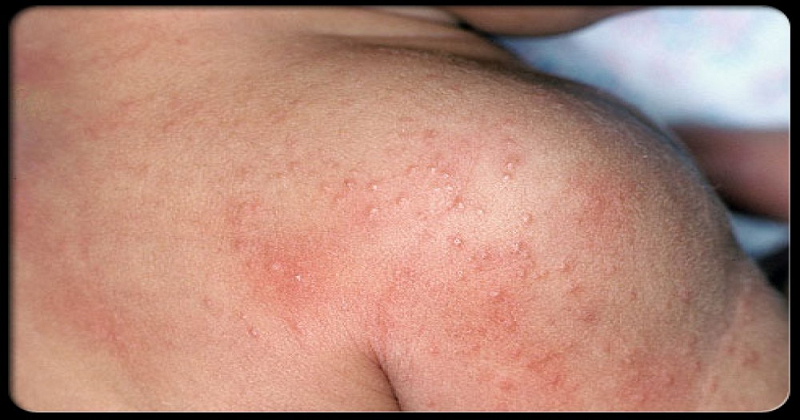
If your protective gear gets wet, change it out.Immediately wash the exposed area with cool, clean water.
#Skin rashes that itch and burn treatment skin#
lose four times as many workdays for skin problems compared to other construction trade workers.

Not only is this painful and distressing to the worker, but it is harmful to their employer as well- OSHA reports that concrete workers in the U.S. Severe cases of concrete skin irritation can lead to permanent scarring and even require skin grafts or amputations. If hardened concrete is left untreated on the skin, skin begins to blister, swell, and bleed, leading to first-, second-, and even third-degree burns following soon after. That’s because, in order for concrete to harden, it has to absorb moisture, drawing water away from anything that holds moisture-even wet clothing and skin-which only aids in the drying process. Once concrete starts hardening, burns can form slowly over hours or days. Washing with soap and water as soon as contact occurs can prevent worsening skin issues and damage. Quick note: pH is a measure of how acidic or alkaline a solution is on a scale of 0-14 (most acidic to most alkaline). Contact with this high pH can lead to a chemical reaction, with the potential to cause severe chemical burns to the skin or worse. When wet, uncured Portland cement reaches caustic pH levels of 12 or higher, compared to the skin’s pH scales, which range between 4-7. This is because concrete includes a binder ingredient called Portland cement, which is also found in mortar, plaster, grout, and more. Irritation is caused by the skin’s exposure to concrete and, more specifically, its aggregate material makeup. Skip to the bottom for HexArmor's PPE recommendations.

It’s best to avoid or minimize exposure to concrete and cement to prevent injury, and part of that is knowing what you’re up against, as well as properly gearing up for the job. The good news? These injuries are preventable. The three main skin reactions to concrete are: Concrete can be highly caustic, resulting in ailments ranging from moderate irritation to the thickening and cracking of the skin or worse, and are associated with long healing times. Present in all industries and applications where concrete is being used, some of the most common injuries to workers are related to your largest organ – your skin. From slips, trips, and falls to lockout/tagout issues and more, over 10% of those workers, roughly 28,000, experienced an injury or illness on the job, and 42 died in just one year, according to the Occupational Safety and Health Administration (OSHA). With more than 250,000 people working in concrete manufacturing, the safety risks are high and frequent when working with this material. It’s just about everywhere – buildings, bridges, sidewalks, parking garages, roads… you name it. Apply creams (free of alcohol) such as Elta lite, Aquaphor, Eucerin, Nivea as often as needed to keep the skin moist and soft.Concrete. Once your wound is healed, stop using the Bacitracin, Cutecerin gauze and gauze dressings. Newly healed skin needs moisturizing creams to prevent drying and cracking. The skin is healed when it appears dull pink or red, is not moist or weepy, and no longer stings when you touch it. Use moisturizing lotion to relieve these symptoms. The wound may feel stiff, dry, itchy, or tight as it heals. If you have any broken bones or are having surgery in less than a week do not take ibuprofen. Take this medicine 1 hour before washing your wounds.īetween wound cares use acetaminophen (Tylenol) or ibuprofen (Advil) to treat pain.

Your doctor may have prescribed pain medicines for you. Secure dressings with cotton gauze as needed. If your wound has been drying out between dressing changes, you may want to apply a thicker layer of Bacitracin.Īpply a thin layer of moisturizing lotion to all healed areas of skin that surround the open wound.Īpply Cuticerin (non-stick) gauze to all open wounds. Most patients should wash their wounds during their daily showers.ĭry off the skin around the wound with a towel.Īpply a thin layer of Bacitracin to all open wounds. Wash off antibiotic creams, soft scabs, and any loose dead tissue. Wash your wounds gently once a day with antibacterial soap such as Dial and a clean washcloth. Dry dressing removal cleans away dead tissue and debris. Wash your hands with soap and water before touching your wound. If your wounds take longer than 2 weeks to heal, they may be deeper wounds and should be looked at by your health care provider. Sometimes, road rash can go through all the layers of skin and require skin grafting surgery to heal. Most road rash should heal within 2 weeks with good care of your wounds by keeping them clean and moist. Road rash is a common term used for abrasions caused by scrapes received during an accident. Abrasions are injuries to the skin and its underlying tissue caused by rubbing or scraping.


 0 kommentar(er)
0 kommentar(er)
